A Serengeti balloon safari is a once-in-a-lifetime experience. My wife and I went on one together and it was an unforgettable adventure.
Nothing quite illuminates unparalleled views from the clouds of the untouched wilderness and seemingly endless plains, or the experience of floating through the sky above thousands of wildebeests, zebras, antelopes and predators.
Although it is not a budget-friendly option, going on a balloon safari above Serengeti National Park puts the cherry on top of what is already a dream holiday destination.
Balloon safari companies offer world-class service and guests can rest easy knowing they are in good hands.
In this article, I'll share my best insights on Serengeti Balloon Safaris and other important factors like ideal weather conditions, safety concerns, passenger requirements, and costs.
Let's dive in.
My Quick Takeaways:
Considering a Serengeti balloon safari? Here's what you need to know at a glance:
- Unparalleled Experience: Float above the Serengeti's vast plains, witnessing thousands of wildebeests, zebras, and antelopes from a unique aerial perspective.
- Ideal Conditions: The Serengeti's gentle winds and predictable weather patterns make it perfect for ballooning, with most flights lasting about an hour.
- Best Locations: Launch sites include the central Serengeti near Seronera (year-round) and the Ndutu area in the Ngorongoro Conservation Area (December to March), offering prime views of the Great Migration.
- Safety and Expertise: Highly experienced pilots conduct rigorous pre-flight safety checks, ensuring a secure and thrilling adventure.
- Cost Consideration: Prices start around $550 per person, often including pick-up from lodgings and additional amenities.
Ready for a full breakdown of what to expect on a Serengeti balloon safari? Let's check out my complete guide!
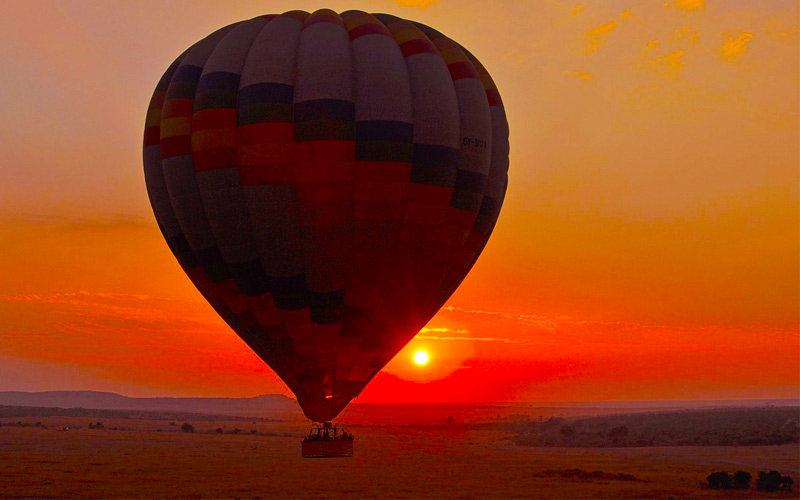
Book a Serengeti Balloon Safari
Get a quote from our recommended local operator
Serengeti Balloon Safari FAQs
What happens on a Serengeti Balloon Safari?
A Serengeti balloon safari is pretty straightforward.
A hot air balloon ride in the Serengeti almost always comes with gentle winds that sweep over the plains and predictable weather patterns – making most days in the Serengeti a perfect day to take the trip.
The highly experienced pilots can choose to either skim along the tops of the trees, navigate the winding riverbeds or stay low to the dew-covered plains.
Often the balloon cruises effortlessly just metres above hundreds of antelope and predators alike.
Along with an exhilarating flight, some of the best safari companies offer a glass of champagne as the balloon settles back down to earth.
Guests then continue to a sunrise breakfast on the plains of the Serengeti under the ancient acacia trees.
With a sunrise or sunset lift-off, you are guaranteed more than just jaw-dropping views, but the best chance of spotting animals in the Serengeti that are at their most active during the cooler parts of the day.
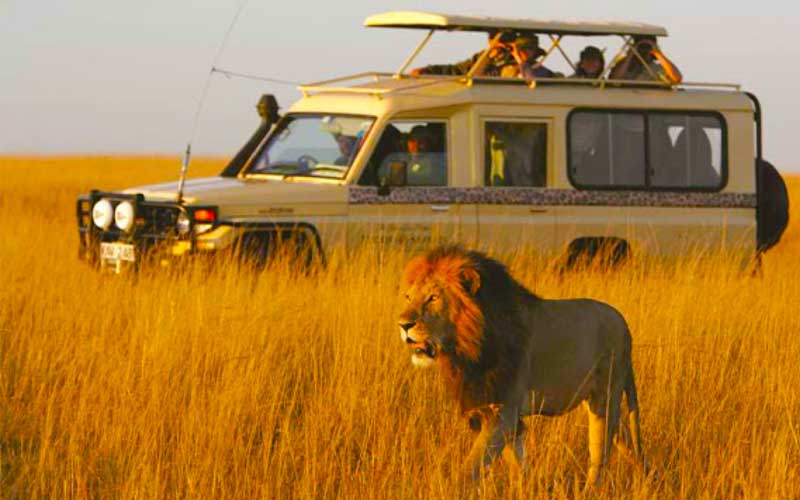
Plan your Safari experience
Check out these amazing deals on epic safari experiences now.
Length of a Serengeti Balloon Safari
Most Serengeti Balloon Safaris last for about an hour.
A different course is taken for each flight, depending on the conditions and wind direction, meaning the landing point for each flight is largely unknown beforehand.
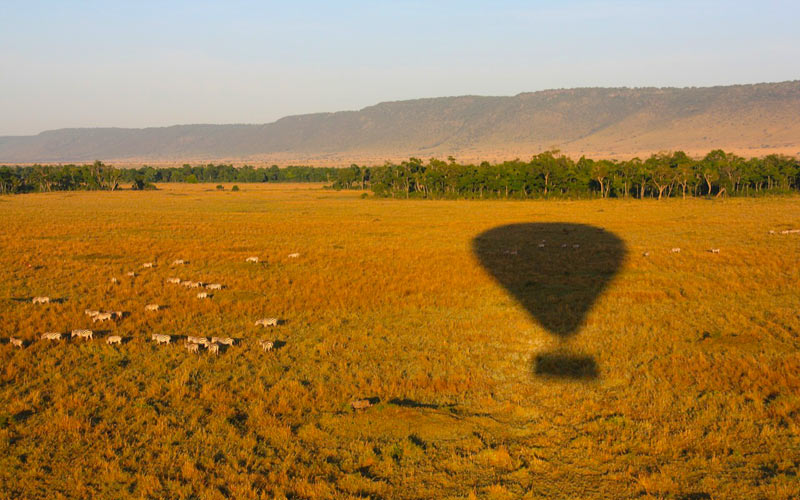
Where do Serengeti Balloon Safaris take place?
The best location for Serengeti Balloon Safaris depends on wildlife viewing, which is often determined by events like the Great Wildebeest Migration.
Flights take off daily from four different sites across the Serengeti National Park. The launch site in the central Serengeti close to Seronera operates all year round.
A separate site in the Ndutu area in the Ngorongoro Conservation Area is operational from December to March.
The Ndutu area offers arguably the greatest chance of witnessing the Great Migration from the air, as thousands of wildebeests and zebras reliably gather in this area from December to March.
The dry season from June to October sees balloons take off over the Western and Northern Serengeti in search of wildlife.
The migration is mobile and a level of luck is involved in catching a glimpse of the wide-open plains swathed in antelope.
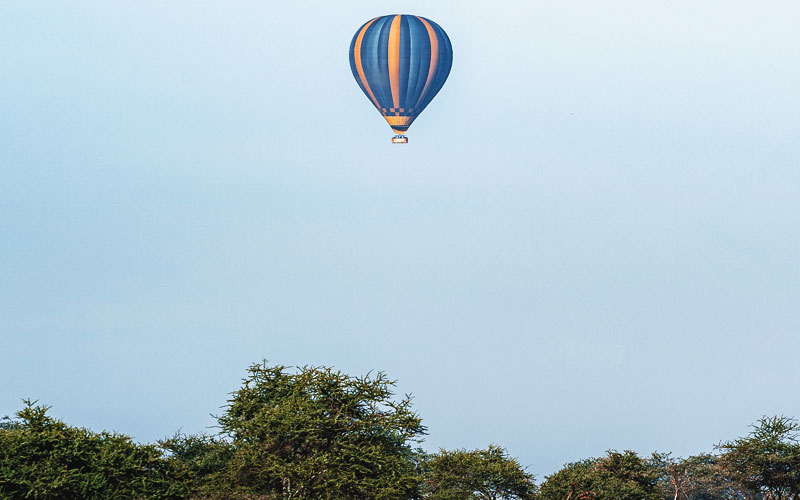
When is the best time for a Serengeti Balloon Safari?
Almost every day boasts perfect conditions for a Serengeti Balloon Safari. Overall, the weather patterns are largely predictable and the climate is relatively stable.
Read on for a complete breakdown of the Tanzanian seasons and the best time of year to visit the Serengeti.

Plan your Safari experience
Check out these amazing deals on epic safari experiences now.
Dry Season
The most popular time to visit Tanzania is generally from mid-June to October. As East Africa’s dry season, this time of year has the most predictable weather and provides ideal safari conditions.
While early mornings and evenings might be cold, the temperature during this season is fairly predictable. Thermometer readings are often around 23°C/73°F, reaching a high of 28°C/82°F in the coastal areas.
Which tour? Here are 5 Serengeti safari tours I highly recommend:
- Group Camping Safari that includes Tarangire and Ngorongoro (4 days)
- Budget Serengeti Safari (5 days)
- Scenic Northern Tanzania Safari (7 days)
- Serengeti Trail that includes Ngorongoro (8 days)
- Best of Kenya and Tanzania (incl. 6 national parks) (12 days)
See more Serengeti safari deals.
Wet Seasons
When visiting Tanzania and Kenya, the dry landscapes are transformed into a lush, green wonderland in the wet season. Temperatures increase during this period and usually range between 24°C/75°F and 27°C/81°F, reaching highs of 30°C/86°F along the coast.
There are two types of rainy periods in this season:
- Short rains (November-December): Afternoon thunderstorms are often expected to take place.
- Long rains (March-April): The long rains usher in the peak of the wet season, which is typically marked by hot and humid conditions.
Although it might seem natural to avoid a flight in the rainy seasons, this can actually be an ideal time for a balloon flight.
The rain usually comes in the late afternoon and evening, so a morning flight most often brings with it bright and crisp conditions.
The gentle winds also make for the smoothest balloon flights possible.
Known as the ‘green seasons’ the great migration passes through the central Serengeti in these seasons. The verdant, rich foliage and dust-free landscape make for ideal game viewing from above.
In the eventuality that poor weather does come into play on the morning of your flight, balloon safari companies offer either a full refund or a free of charge rescheduling of your adventure.

Book a Serengeti Balloon Safari
Get a quote from our recommended local operator
Is a Serengeti Balloon Safari dangerous?
No, a Serengeti balloon safari isn't dangerous.
Every precaution is taken to ensure that the pilot and passengers are not only safe, but able to enjoy a thrilling experience.
The balloons are flown by meticulous pilots who run through rigorous pre-flight safety checks. The pilots will also analyse the conditions and wind speed before deciding to take off or not.
Registered balloon safari companies are fully licensed and annually inspected by the Tanzania Civil Aviation Authority. It is also mandatory for passengers to be strapped in with a passenger seat belt.
Soaring high above the wildebeests down below can be a nerve-wracking experience for those with a fear of heights.
Passengers who have undertaken a hot air balloon ride, however, can attest to the fact that in the end, their fear of falling was unfounded.
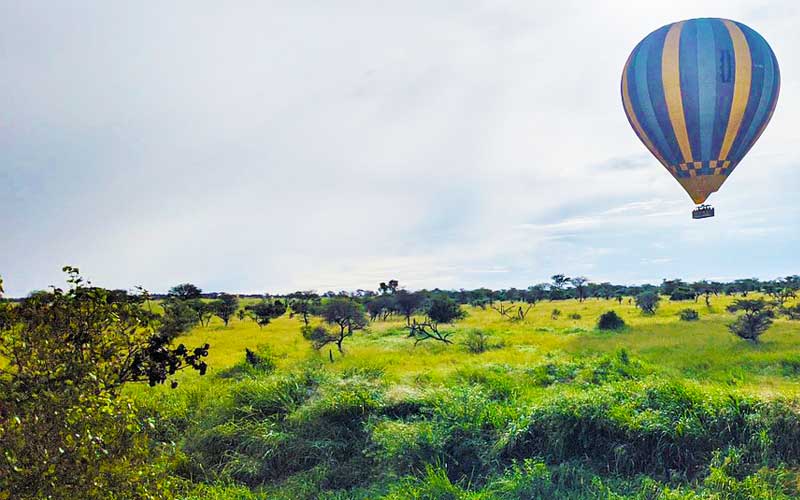
What are the passenger requirements for a Serengeti Balloon Safari?
There are a few requirements that passengers must be aware of before booking a balloon safari in the Serengeti.
All passengers must be able to use their arms to hold onto rope handles during take-off and landing. They must be able to bend their knees and be mobile enough to climb in and out of the basket.
My Pro Tip: Passengers potentially weighing more than 265lbs, 19 stone or 120kg may be charged for two people. Hot air balloon trips are not suitable for pregnant people and people with heart problems.
Preparing For a Serengeti Balloon Safari
Preparing for a Serengeti Balloon Safari is relatively easy.
Guests are picked up from their lodges inside Serengeti very early in the morning. The transfer from the Seronera area leaves at 5.30 am, but if you are in the surrounding areas, be prepared to be picked up around 4.00 am.
It is recommended that passengers bring a hat with them for protection not only from the sun, but also from the intense heat of the burners.
Although the burner creates heat, the temperature is often cool in the morning, so a jacket is recommended. Long-sleeved tops and long trousers are necessary, and cameras and binoculars are pretty essential.
See more on what to pack for a Tanzanian safari.
Which tour? Here are my favourite Serengeti Balloon Safaris:
- Budget Christmas in Serengeti Balloon Safari (1 day)
- New Year's Luxury Serengeti Balloon Safari (5 days)
See more Serengeti safari deals.
How much does a Serengeti Balloon Safari cost?
Prices range from $550 per person and upwards for a Serengeti Balloon Safari, depending on whether you are joining a group or flying privately.
The price is generally all-inclusive with pickup from your lodgings and in most cases with all snacks and extras. The only thing not included is park entry fees.
The price does, however, include the TANAPA ballooning fee of US$40.
My Pro Tip: It is highly recommended to book early as flights fill up fast, especially in the peak season.
Why Serengeti Balloon Safaris are so Expensive
Serengeti Balloon Safaris are expensive for several reasons.
The balloon itself costs US$100,000 and upwards due to the large amounts of fuel used to get them up in the air.
A crew of roughly 5-10 people is required to get the balloon airborne, making the concession fees for each passenger substantial.
Balloons also have a relatively short life span, so most balloons are ‘retired’ after about 850 hours to minimise potential faults.
Finally, balloon safaris take place in remote locations, so the logistics are time and resource consuming.
Ultimately, a lot of payments in Serengeti National Park like balloon flights go towards conservation funds.
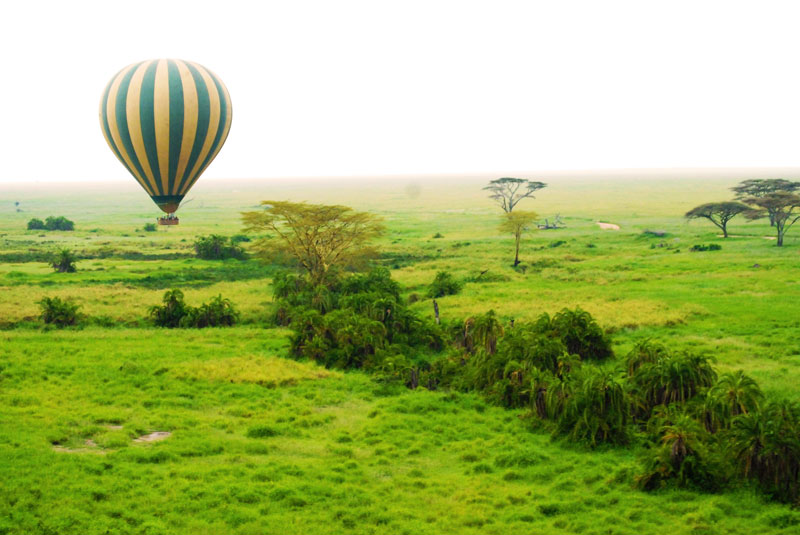
My Final Thoughts
And that's a wrap! There's really nothing to it with Serengeti Balloon Safaris. You're guaranteed both a physical and figurative change in perspective during this thrilling safari adventure. What do you think? Let me know in the comments.
